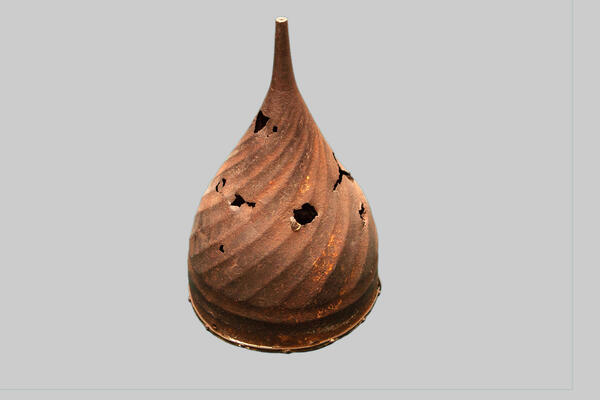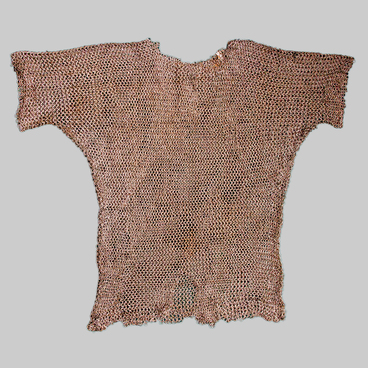Service people in Siberia extensively used protective weapons. This greatly distinguished them from the warriors of Central Russia. Throughout the 17th century, the Cossacks and Streltsy, who practically did not use armour during military operations in the West, finding themselves beyond the Urals, tried to quickly get shells and helmets, because they felt vulnerable in clashes with warlike natives. Unlike European Russia, in Siberia, only military elite, but also ordinary fighters wore the defensive weapons.
According to the preserved sources, service men in Siberia used helmets a little less often than body armour. Historical documents mention such types of warheads as spiked helmets, headpieces (‘sheloms’), iron caps, misyur caps (misyurki), brought beyond the Urals from European Russia. Some protective weapons were purchased independently and were held by the warriors as private property.
Additionally, the main volume of protective weapons was delivered to Siberia on the instructions of the Moscow authorities to the arsenal of cities and prisons as the ‘sovereign’s treasury’. For example, according to data of the year 1647, 50 headpieces and spiked helmets were kept in Tobolsk.
The Tobolsk Museum Reserve exhibits a rare example of a Russian helmet — the so-called “shalom” (headpiece). Unlike the spiked helmets, it has a voluminous crown with an elongated crest. The exhibit has an “embossed” crown — it is covered with twisted grooves. It has a narrow convex hoop on the lower edge and a long crest.
“Sheloms” (headpieces) were a popular type of battle warheads of the Russian local cavalry of the 16th century. There are rare mentions of them among the weapons of the Siberian service people of the 17th century. Historians suggest that commanders of military formations and commanding officers wore sheloms in Siberia. There are many illustrations by cartographer and artist Semyon Remezov on the pages of the Kungur chronicle, which tells about Yermak’s expedition. It is possible to relate some of the drawings of high cylindrical and sphero-conical helmets precisely with sheloms.
According to the preserved sources, service men in Siberia used helmets a little less often than body armour. Historical documents mention such types of warheads as spiked helmets, headpieces (‘sheloms’), iron caps, misyur caps (misyurki), brought beyond the Urals from European Russia. Some protective weapons were purchased independently and were held by the warriors as private property.
Additionally, the main volume of protective weapons was delivered to Siberia on the instructions of the Moscow authorities to the arsenal of cities and prisons as the ‘sovereign’s treasury’. For example, according to data of the year 1647, 50 headpieces and spiked helmets were kept in Tobolsk.
The Tobolsk Museum Reserve exhibits a rare example of a Russian helmet — the so-called “shalom” (headpiece). Unlike the spiked helmets, it has a voluminous crown with an elongated crest. The exhibit has an “embossed” crown — it is covered with twisted grooves. It has a narrow convex hoop on the lower edge and a long crest.
“Sheloms” (headpieces) were a popular type of battle warheads of the Russian local cavalry of the 16th century. There are rare mentions of them among the weapons of the Siberian service people of the 17th century. Historians suggest that commanders of military formations and commanding officers wore sheloms in Siberia. There are many illustrations by cartographer and artist Semyon Remezov on the pages of the Kungur chronicle, which tells about Yermak’s expedition. It is possible to relate some of the drawings of high cylindrical and sphero-conical helmets precisely with sheloms.



